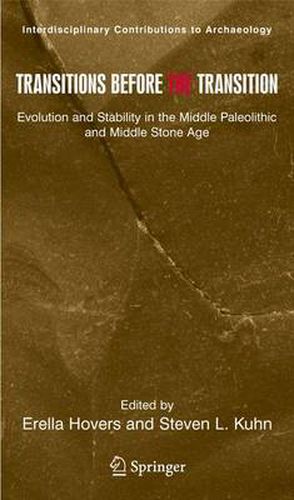Readings Newsletter
Become a Readings Member to make your shopping experience even easier.
Sign in or sign up for free!
You’re not far away from qualifying for FREE standard shipping within Australia
You’ve qualified for FREE standard shipping within Australia
The cart is loading…






This title is printed to order. This book may have been self-published. If so, we cannot guarantee the quality of the content. In the main most books will have gone through the editing process however some may not. We therefore suggest that you be aware of this before ordering this book. If in doubt check either the author or publisher’s details as we are unable to accept any returns unless they are faulty. Please contact us if you have any questions.
Modern human origins and the fate of the Neanderthals are arguably the most compelling and contentious arenas in paleoanthropology. The much-discussed split between advocates of a single, early emergence of anatomically modern humans in sub-Saharan Africa and supporters of various regional continuity positions is only part of the picture. Equally if not more important are questions surrounding the origins of modern behavior, and the relationships between anatomical and behavioral changes that occurred during the past 200,000 years. Although modern humans as a species may be defined in terms of their skeletal anatomy, it is their behavior, and the social and cognitive structures that support that behavior, which most clearly distinguish Homo sapiens from earlier forms of humans.
This book assembles researchers working in Eurasia and Africa to discuss the archaeological record of the Middle Paleolithic and the Middle Stone Age. This is a time period when Homo sapiens last shared the world with other species, and during which patterns of behavior characteristic of modern humans developed and coalesced. Contributions to this volume query and challenge some current notions about the tempo and mode of cultural evolution, and about the processes that underlie the emergence of modern behavior. The papers focus on several fundamental questions. Do typical elements of modern human behavior appear suddenly, or are there earlier archaeological precursors of them? Are the archaeological records of the Middle Paleolithic and Middle Stone Age unchanging and monotonous, or are there detectable evolutionary trends within these periods? Coming to diverse conclusions, the papers in this volume open up new avenues to thinking about this crucial interval in human evolutionary history.
$9.00 standard shipping within Australia
FREE standard shipping within Australia for orders over $100.00
Express & International shipping calculated at checkout
This title is printed to order. This book may have been self-published. If so, we cannot guarantee the quality of the content. In the main most books will have gone through the editing process however some may not. We therefore suggest that you be aware of this before ordering this book. If in doubt check either the author or publisher’s details as we are unable to accept any returns unless they are faulty. Please contact us if you have any questions.
Modern human origins and the fate of the Neanderthals are arguably the most compelling and contentious arenas in paleoanthropology. The much-discussed split between advocates of a single, early emergence of anatomically modern humans in sub-Saharan Africa and supporters of various regional continuity positions is only part of the picture. Equally if not more important are questions surrounding the origins of modern behavior, and the relationships between anatomical and behavioral changes that occurred during the past 200,000 years. Although modern humans as a species may be defined in terms of their skeletal anatomy, it is their behavior, and the social and cognitive structures that support that behavior, which most clearly distinguish Homo sapiens from earlier forms of humans.
This book assembles researchers working in Eurasia and Africa to discuss the archaeological record of the Middle Paleolithic and the Middle Stone Age. This is a time period when Homo sapiens last shared the world with other species, and during which patterns of behavior characteristic of modern humans developed and coalesced. Contributions to this volume query and challenge some current notions about the tempo and mode of cultural evolution, and about the processes that underlie the emergence of modern behavior. The papers focus on several fundamental questions. Do typical elements of modern human behavior appear suddenly, or are there earlier archaeological precursors of them? Are the archaeological records of the Middle Paleolithic and Middle Stone Age unchanging and monotonous, or are there detectable evolutionary trends within these periods? Coming to diverse conclusions, the papers in this volume open up new avenues to thinking about this crucial interval in human evolutionary history.